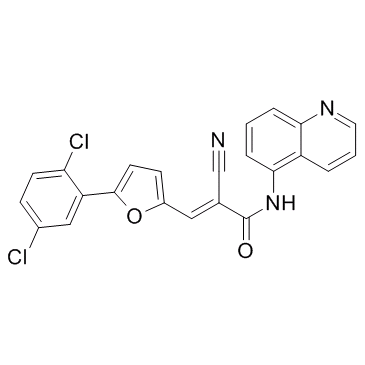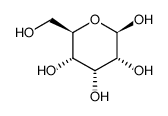Journal of Pharmacology and Experimental Therapeutics
2014-08-01
Blocking sirtuin 1 and 2 inhibits renal interstitial fibroblast activation and attenuates renal interstitial fibrosis in obstructive nephropathy.
Murugavel Ponnusamy, Xiaoxu Zhou, Yanli Yan, Jinhua Tang, Evelyn Tolbert, Ting C Zhao, Rujun Gong, Shougang Zhuang
Index: J. Pharmacol. Exp. Ther. 350(2) , 243-56, (2014)
Full Text: HTML
Abstract
Our recent studies revealed that blocking class I/II histone deacetylases (HDACs) inhibits renal interstitial fibroblast activation and proliferation and alleviates development of renal fibrosis. However, the effect of class III HDAC, particularly sirtuin 1 and 2 (SIRT1 and SIRT2), inhibition on renal fibrogenesis remains elusive. Here, we demonstrate that both SIRT1 and SIRT2 were expressed in cultured renal interstitial fibroblasts (NRK-49F). Exposure of NRK-49F to sirtinol, a selective inhibitor of SIRT1/2, or EX527 (6-chloro-2,3,4,9-tetrahydro-1H-carbazole-1-carboxamide), an inhibitor for SIRT1, resulted in reduced expression of fibroblast activation markers (α-smooth muscle actin, fibronectin, and collagen I) as well as proliferation markers (proliferating cell nuclear antigen, cyclin D1, cyclin E) in dose- and time-dependent manners. Treatment with a SIRT2 inhibitor, AGK2 (2-cyano-3-[5-(2,5-dichlorophenyl)-2-furanyl]-N-5-quinolinyl-2-propenamide), also dose- and time-dependently inhibited renal fibroblast activation and, to a lesser extent, cell proliferation. Furthermore, silencing of either SIRT1 or SIRT2 by small interfering RNA exhibited similar inhibitory effects. In a mouse model of obstructive nephropathy, administration of sirtinol attenuated deposition of collagen fibrils as well as reduced expression of α-smooth muscle actin, collagen I, and fibronectin in the injured kidney. SIRT1/2 inhibition-mediated antifibrotic effects are associated with dephosphorylation of epidermal growth factor receptor (EGFR), platelet-derived growth factor receptor-β (PDGFRβ), and signal transducer and activator of transcription 3. Thus, SIRT1/2 activity may contribute to renal fibroblast activation and proliferation as well as renal fibrogenesis through activation of at least EGFR and PDGFRβ signaling. Blocking SIRT1/2 activation may have therapeutic potential for the treatment of chronic kidney disease. Copyright © 2014 by The American Society for Pharmacology and Experimental Therapeutics.
Related Compounds


